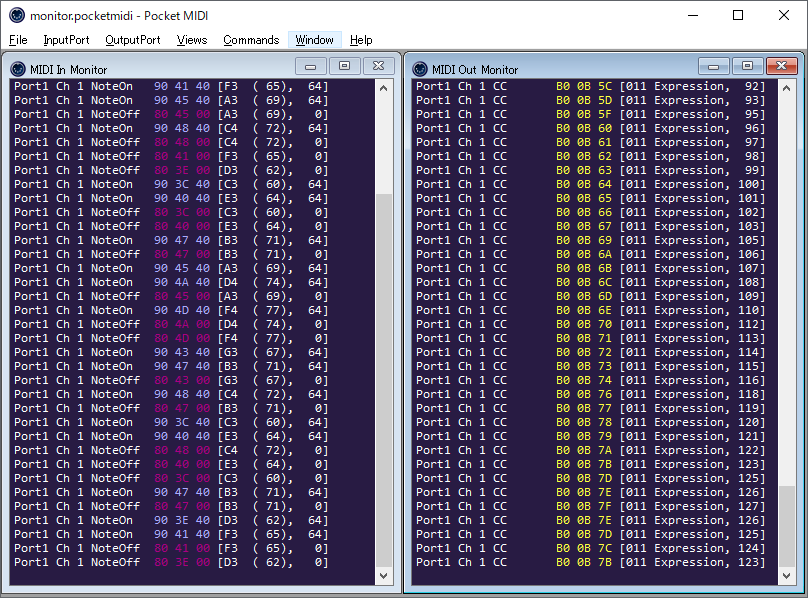Midi To Text Windows
MidiYodi - MIDI Editor and MIDI PlayerNews2019-03-17MidiYodi 2019.1 released introducing bulk editing!2018-01-05MidiYodi 2018.1 released.MidiYodiMidiYodi is a MIDI Editor that allows editing, examination,playback and conversion of MIDI files.MidiYodi is available on all major platforms including Windows,Mac and Unix.MidiYodi contains a rich set of features such as:MIDI File ExaminationMidiYodi provides various tools to examine the layout and content of aMIDI file. Main WindowDisplays therolled-out contents of a MIDI file including a measure bar and all itstracks. Each track displays miniature 'notes', instrument and a volumecurve.
Note names, MIDI numbers and frequenciesNote names, MIDI numbers and frequencies are related here in tables and via an application that converts them. The musical interval between two notes depends on the ratio of their frequencies. See for more details and an introduction to frequency and pitch.An octave is a ratio of 2:1 and, in equal temperament, an octave comprises 12 equal semitones.
Each semitone therefore has a ratio of 2 1/12 (approximately 1.059). By convention, A4 is often set at 440 Hz. These data were used to calculate the first table below, which gives the frequency of any standard keyboard noteor MIDI note number. To convert from any frequency to pitch(i.e.
Midi Test Windows 10
Converting MIDI Files to Text Using 'MidiToolbox'. Its purpose is to perform a variety of MIDI manipulation and analysis. After adding the toolbox folder to my Matlab path, I attempt to execute the function called 'readmidi' which is shown at the beginning of Chapter 3 in the toolbox manual. Makes a midi file when given an ascii file in the format described above. It requires all lines corresponding to a given track to be in chronological order. (It's possible to drop this restriction, if all events are specified by the CR method, by presorting the lines.) Lines from different tracks can be separated or interleaved in any way.

To the nearest note and how far it is out of tune), goto the.This table is reproduced inverted below, i.e. With high pitch at the top.To convert from any frequency to pitch(i.e. To the nearest note and how far it is out of tune, go to the written by Andrew Botros.How to do the caluation?
Suppose thattwo notes have frequenciesf 1 and f 2, and a frequency ratio of f 2/f 1. An octave is a ratio of 2:1, so the number of octaves between f 2 and f 1 isn o = log 2(f 2/f 1).Now to divide the octave into smaller units. In equal temperament, where all semitones have the same frequency ratio of 2 1/12, conversion between note name and frequency is simple. First, one needs a reference note and frequency. This is usually A4, which is often set at 440 Hz. For a note that lies n semitones higher (or −n semitones lower), the frequency is thenf n = 2 n/12.440 Hz.Conversely, one can obtain n, the number of semitones from A4, fromn = 12.log 2(f n/440 Hz).Similar equations give n o, the number of octaves from A4, and n c, the number of cents from A4:n o = log 2(f n/440 Hz) and n c = 1200.log 2(f n/440 Hz).In electronic music, pitch is often given by MIDI number: let's call it m for our purposes.
Midi To Text Windows 11


Midi To Text Windows 8
M for the note A4 is 69 and increases by one for each equal tempered semitone, so this gives us a simple conversion between frequencies and MIDI numbers (again using 440 Hz as the pitch of A4):m = 12.log 2(f m/440 Hz) + 69 and f m = 2 (m−69)/12(440 Hz).The notation used here is not universal: in German speaking countries, H is used instead of B, and B is used for Bb. (This allowed Bach to write his name in the Art of Fugue.) And of course when different tuning systems are used, different names are applied.